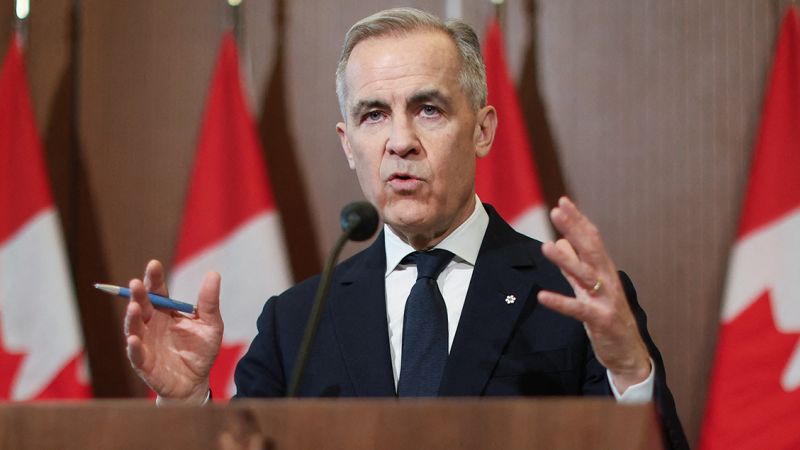In a pivotal moment of diplomatic tension, Canadian Prime Minister Mark Carney is scheduled to meet with U.S. President Donald Trump at the White House. This meeting holds significant importance, as it could mark one of the most contentious interactions between the leaders of Canada and the United States in recent history. The relationship between the two neighboring countries has long been characterized by robust trade partnerships and strong political alignments, but recent developments have strained these ties considerably.
Canada has historically stood as America’s second-largest trading partner and a close ally on various fronts, particularly in terms of national security and commerce. However, recent months have seen President Trump’s aggressive imposition of tariffs, which have disrupted this longstanding relationship. These tariffs have not only created friction between the two nations, but they have also inadvertently bolstered Carney’s political standing as he navigates these turbulent waters.
In the wake of a pivotal federal election victory for the Liberal Party—led by Carney—Canada is now on a direct collision course with the Trump administration. In a resonant post-election address, Carney expressed sentiments of betrayal, stating, “we are over the shock of the American betrayal but we should never forget the lessons.” This remark underscores the growing resentment in Canada towards U.S. trade policies and Trump’s prioritization of an “America First” agenda.
For decades, Canada and the United States enjoyed a mutually beneficial free trade agreement, but Trump’s imposition of widespread tariffs drastically altered that dynamic. The repercussions of this can be felt across both economies, with each country suffering from the strain of the ongoing trade war. Commerce Secretary Howard Lutnick has acknowledged the complexity of negotiating any potential trade arrangement moving forward, suggesting that agreement will not come easily.
The former United States-Mexico-Canada Agreement (USMCA), which replaced NAFTA in 2020, had initially established a framework for cooperation and economic exchange. However, Trump’s decision earlier this year to enact a blanket 25% tariff on both Mexico and Canada briefly disrupted that framework. Although this tariff was suspended following commitments from both nations to address the issues of fentanyl trafficking and illegal immigration, tariffs on imports that don’t comply with the USMCA still linger, placing additional strain on trade relationships.
As a countermeasure to these tariffs, Canada has responded with a series of retaliatory tariffs amounting to 25% on roughly C$30 billion worth of U.S. imports. This includes additional tariffs on auto parts and other goods, echoing the significant economic interdependence and the far-reaching consequences of the trade war. According to governmental statistics, Canada represents a remarkable 14% of all U.S. trade, with Canadian exports predominantly encompassing energy sources and vehicles.
Compounding the challenges faced by businesses on both sides of the border, Trump’s tariffs have begun to strain American industries as well. General Motors, for instance, anticipates losses estimated between $4 billion and $5 billion this year due to the elevated costs associated with tariffs. Smaller businesses, too, are feeling the pinch; companies like Busy Baby have reported substantial increases in the price of imported goods, reflecting the broader impact of these tariffs on inventory costs and consumer pricing.
Conversely, the Federal Reserve’s Beige Book report revealed a decline in Canadian tourism to the United States, suggesting a tangible impact on the retail and hospitality sectors in areas close to the Canadian border. Many businesses reliant on cross-border tourism have noted a marked decrease in Canadian shoppers, who are opting for domestic products over American goods, further contributing to the economic challenges fuelled by the ongoing trade disputes.
As Canadians turn away from American imports, preferring local alternatives—such as Italian tomatoes over Californian ones, or Canadian maple syrup over American brands—the narrative of a strained bilateral relationship continues to unfold. Dylan Lobo, a resident of Toronto, voiced a sentiment shared by many Canadians, indicating that the tariff strategies feel like an uncompromising attack. The current trend suggests a lingering tension that could reshape the economic landscape for both nations well into the future.



